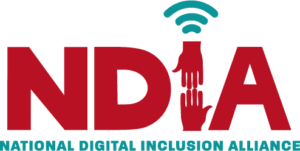Computer Reach: Bridging the Digital Divide and Reducing E-Waste
What is the Digital Divide?
When it comes to accessing technology and the internet, many individuals locally, nationally, and internationally are being left behind. In fact, according to the Pew Research Center, 10 percent of adults in the United States of America do not use the internet. That’s more than 25 million people in the United States alone.
As defined by Merriam-Webster, the term “Digital Divide” refers to “the economic, educational, and social inequalities between those who have computers and online access and those who do not.” Inequality is an accurate word to describe the limitations of the Digital Divide. While some may think of technology as a luxury, tech is becoming increasingly important in completing basic functions in the 21st century. In their documentary “Without A Net: The Digital Divide in America,” Verizon explores this challenging issue, highlighting the impact that limited or no access to technology has on the lives of American students. Click here to watch the full video and learn more.
What is Electronic Waste (E-Waste)?
If you subscribe to a phone service provider, chances are that you have experienced offers to upgrade your current device. With new and improved models being released every year, it can be quite tempting to accept the offer, make slightly larger monthly payments, and enjoy the new bells and whistles included on your device. However, here’s an important question: What do you do with an old device when you get a new one? Do you throw it away? Give it to a friend? Trade it in? These questions all play a fundamental role in understanding e-waste and the impact that it has on our communities.
Encyclopedia Britannica defines electronic waste as, “various forms of electric and electronic equipment that have ceased to be of value to their users or no longer satisfy their original purpose.” More commonly referred to as “e-waste,” these pieces of equipment can take many forms, including computers, cell phones, printers, refrigerators, radios, and more. If a device becomes redundant, requires new parts, or is broken altogether, some individuals might rush to throw it in the trash. However, in many cases, these devices could still be repaired, refurbished, reused, or recycled by individuals and organizations in your local community.
Did you know that e-waste is one of the fastest-growing waste streams? If not properly repaired, reused, or recycled, these devices often make their way to the landfill to sit in piles of trash for not hundreds, not thousands, but millions of years. That’s right. Millions. Electronic devices were designed to not decompose, meaning that something as simple as the glass of a cell phone or computer could take as long as one to two million years to decompose. And if electronic waste continues to make itself to the landfill, eventually, we won’t have any room left.
Further, did you know that several states in the United States of America have banned electronic waste from being dropped off at municipal solid waste (MSW) landfills? In fact, electronics are considered to be “mandatory recyclables” in Pennsylvania. The reason for this is because e-waste materials contain “complex combinations of highly toxic substances that pose a danger to health and the environment” and often “contain recoverable precious materials.” Because of this, e-waste is both wasteful and detrimental to our environment.
Our Approach
Computer Reach is dedicated to responsibly refurbishing, reusing, and recycling received technologies. After repairs have been made, Computer Reach provides the technology to individuals and organizations at affordable prices to increase access and help bridge the digital divide. If you’re interested in donating technology, contact us at 412-444-8816 or info@computerreach.org.
More Information
For more information about Computer Reach, visit our News page to view our recent stories. To learn more about the Digital Divide, view this guide from Allconnect.



My parents have been telling me to become more eco-friendly. They mentioned that e-waste was becoming a problem but I didn’t believe them. Thank you for bringing it to my attention that it is one of the fastest-growing waste streams. I’ll be sure to take care of properly disposing of my phone the next time I upgrade it.